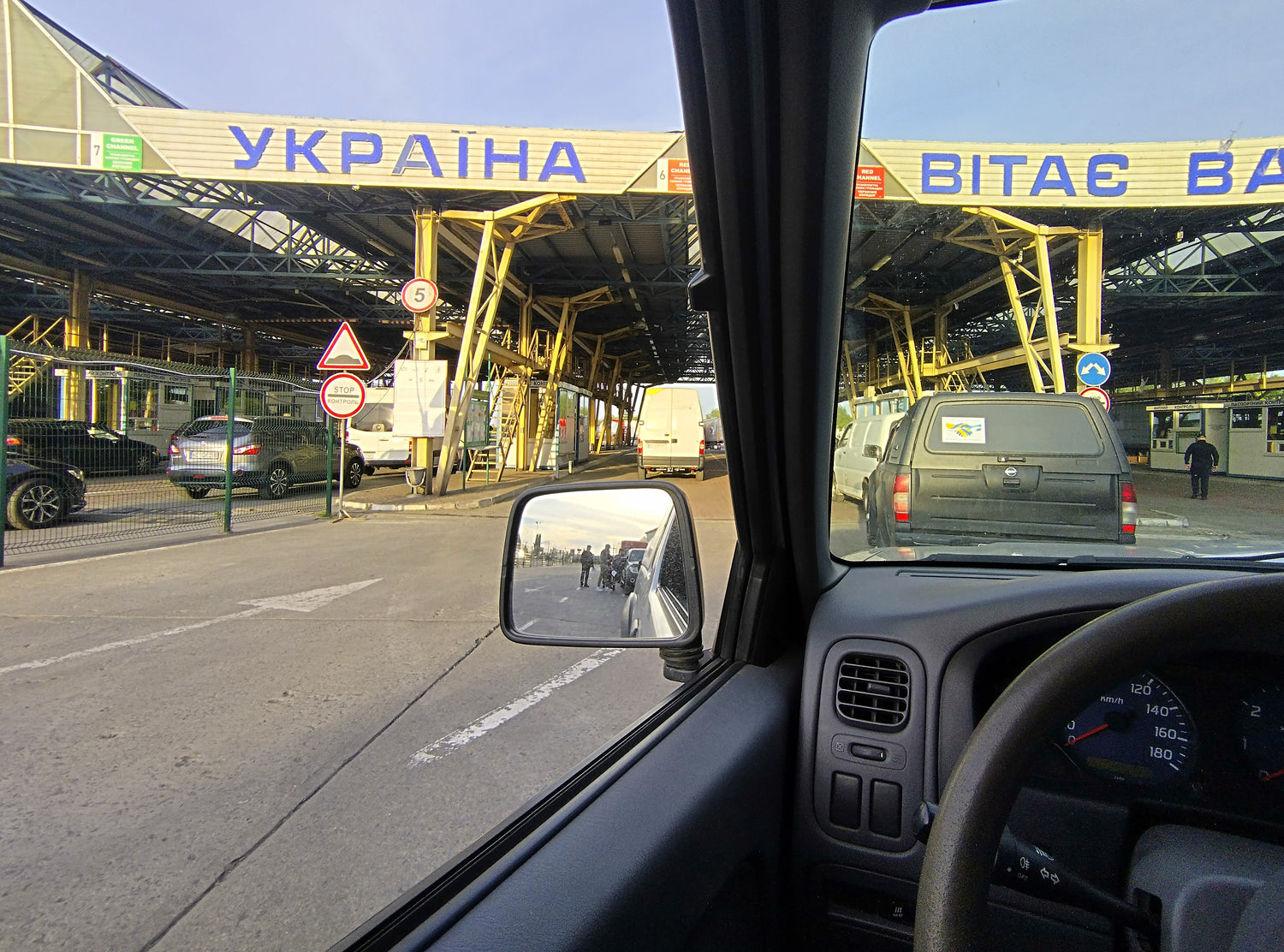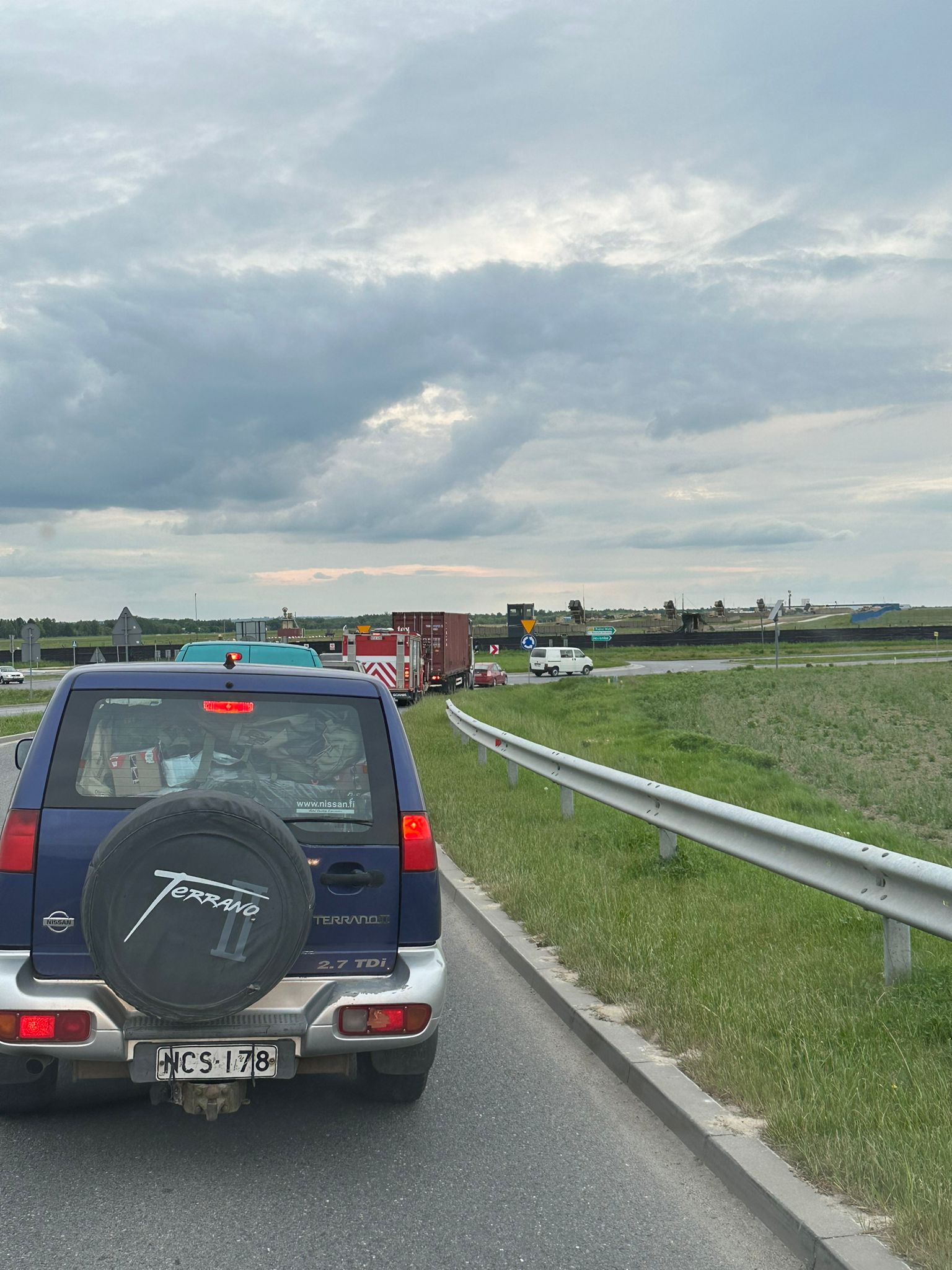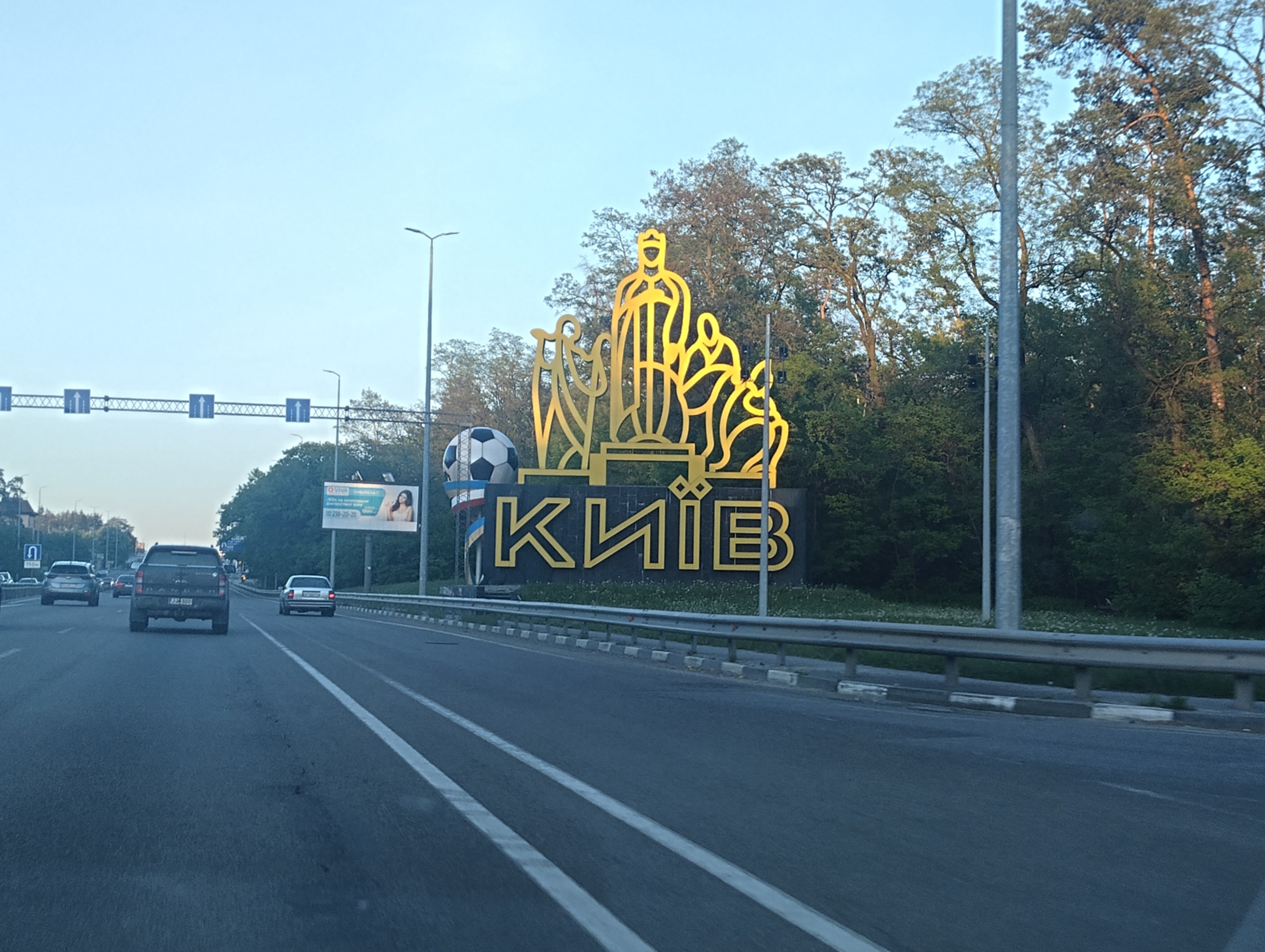The morning before we crossed into Ukraine, the excitement started to rise. Many in the convoy were heading to Ukraine for the first time, not to mention to a war zone. But it was still a long and—as it turned out—quite complicated road ahead.
We had an early gathering outside the hotel, where Dr. Mazur met us and gave us a quick tour of the adjacent integration center for immigrants. We got a brief demonstration of their work, which revolves around helping immigrants, primarily Ukrainians, learn the language and find jobs, etc., in Polish society. Afterward, we were driven back to Ostoya and our vehicles, where Dr. Mazur also treated us to a regal breakfast in a lush, beautiful setting.

After breakfast, we still had a few hours before leaving for the border. Two of us took the fire truck to a store specializing in plumbing and heating, hoping to find new connectors for the fire truck's pump. The pump's connections were still in Finnish standard, while the recipient had requested European. This detail was one of the few we hadn't managed to fix yet and hoped to do so at the last minute.
The store was manned by a lone clerk whose English was not very good. However, we managed to make ourselves understood by taking him out to the vehicle, using sign language, and Google Translate. Unfortunately, a tool was needed to loosen the connections so that the thread size could be measured, and neither we nor the store had it. Time was also running out, so we had to go back empty-handed. Back at the location, we took some photos together with Dr. Mazur and the convoy, then packed our gear and set off for the border.

What follows now is a long and intricate account of how things work at the border crossing. It can be frustrating, confusing, and perhaps boring reading, which if so matches the experience at the border itself very well. Unlike the border crossing, however, you as a reader have the option to skip the many convoluted steps and move on in the journey!
For an ordinary truck driver, the journey across the border can take days or even weeks. If you are delivering humanitarian aid, you have the right to bypass the queue, which significantly speeds up the crossing. Still, there is a lot of variation in the time it takes, and you never know in advance whether a customs officer will be amenable or in a bad mood, creating extra steps and conditions that take a long time to implement and/or talk your way through.
In our case, our Ukrainian lawyers had prepared our declaration papers and more well, but there were still a number of errors that meant we had to wait almost an hour before we could even start the inspection procedure, with Andreas persuading a senior official to let us in. After that, we drove all the cars, one at a time, up to a window where we (for the first time) handed a customs officer our passports and vehicle papers. After everyone had passed, which took up to five minutes per vehicle, we again waited in a queue to drive a few dozen meters to a loading dock where we waited again for the world's grumpiest customs person to process the vehicles (and the same papers again). This time, however, he asked for an export certificate that had never been required before and should not be needed for donated vehicles.
After a long wait and much fixing by Andreas, we finally got the green light to drive out. We drove up to a barrier and were let through, one vehicle at a time... except ours. It turned out that the first Polish customs officer had managed to read a '1' on our license plate as an 'L', and now our plate did not match what was in the system. The person manning the barrier came out to our vehicle three times, asked for our papers and what was on the plate, made phone calls from inside his little guard booth, and typed on the computer. Twenty minutes later, he had finally sorted out the system and the barrier went up. After about 3.5 hours, we were finally through... the Polish side. Ukrainian customs remained.
The Ukrainian side at least has an incentive to let us in, as most customs officers appreciate the humanitarian aid coming in, but they still have a very bureaucratic procedure that must be followed. It goes something like this:
- Drive in and show all passengers' passports. Receive a slip where an officer has written down the vehicle's registration number and number of passengers.
- Drive on, park, and wait for another officer who also takes the passports and vehicle papers with him. After a quarter of an hour or so, you get the passports back, hopefully with a stamp in them, and the little paper slip also stamped.
- Drive on, park and get out of the vehicle. The driver goes down to a waiting room in a basement with everyone's passports, the vehicle's export papers (from Traficom if a Finnish vehicle), a goods declaration in two copies, and the little paper slip.
- Go into an office and let an officer copy the export paper and the driver's passport (this can be done at home if you are sufficiently foresighted).
- Go back to the waiting room and queue at a window. When it's your turn, give the passes, papers, copies, and slip to the officer who closes the window and starts entering the information into the system. About 10 minutes later, if all goes well, you get everything back except the copies. The little slip should now have a second stamp on it.
- Go out, drive up to the exit gate, and hand the little slip to a final officer. If all is in order, the barrier is raised and you're through! Welcome to Ukraine.


All in all, the whole process took us from 3 PM to 9 PM. Then there was still an hour's drive to Lviv where we were to spend the night. But for the passenger cars, it was relatively painless—the truck and fire truck were directed to their own queue and then just sat there for hours waiting. They arrived at the hotel just before four in the morning.



Leave a comment
This site is protected by hCaptcha and the hCaptcha Privacy Policy and Terms of Service apply.